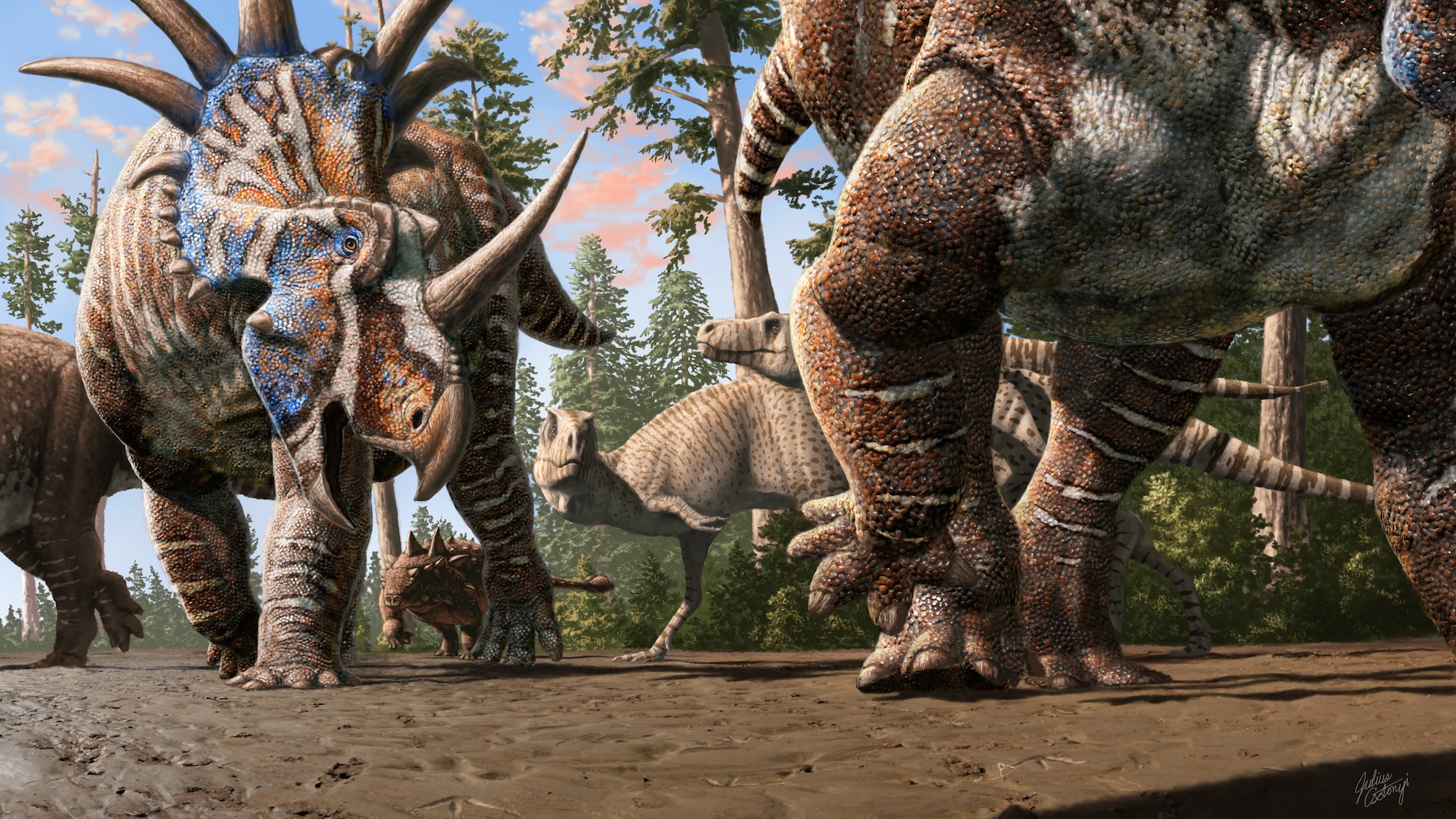Now Reading: Fossil Footprints Reveal Dinosaurs Lived in Multi-Species Herds
-
01
Fossil Footprints Reveal Dinosaurs Lived in Multi-Species Herds
Fossil Footprints Reveal Dinosaurs Lived in Multi-Species Herds

Swift Summary
- A discovery in alberta, Canada’s Dinosaur Provincial Park reveals evidence of multi-species dinosaur herding from the late Cretaceous Era, approximately 76 million years ago.
- Paleontologists uncovered at least 20 preserved footprints in a 312-square-foot sediment area during a field course in July 2024.
- Footprints belonged to multiple species, including five ceratopsians (horned dinosaurs), an ankylosaurid, and an unidentified carnivorous species walking together.
- Two sets of tyrannosaur tracks were found nearby, suggesting potential stalking of the herbivore herd; no evidence indicates a predator-prey encounter occurred.
- The discovery suggests mixed-species herding as an ancient strategy for protection and represents a notable advancement in understanding dinosaur behaviour and social structures.
Indian Opinion Analysis
The revelation of mixed-species herding among dinosaurs provides captivating insights into ancient animal behaviors that mirror modern ecological survival strategies. It expands our comprehension of prehistoric biodiversity and highlights how cooperation across species may have evolved as a response to predation-similar to wildebeest-zebra dynamics observed today. For India, where paleontology is still developing compared to nations like Canada or the U.S., such breakthroughs underscore the importance of investing more resources into discovering fossils within regions like Rajasthan or Gujarat that once hosted diverse prehistoric environments. These findings also serve as motivation for enhancing collaboration with international institutions specializing in fieldwork expertise.
























